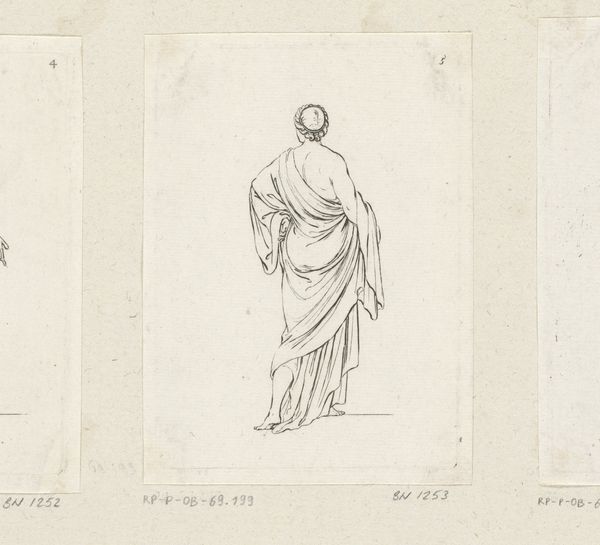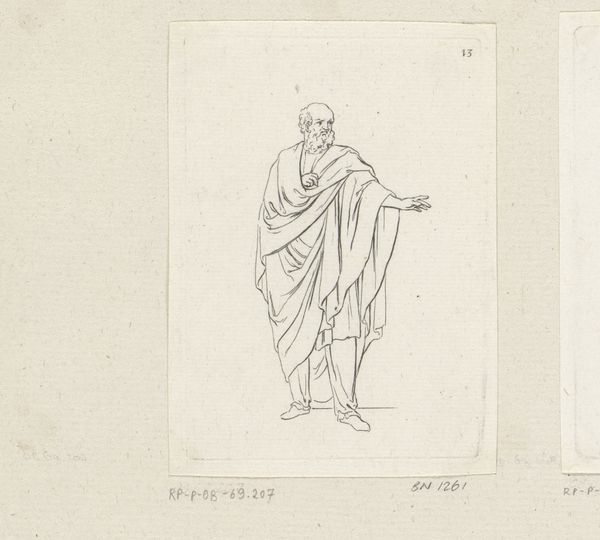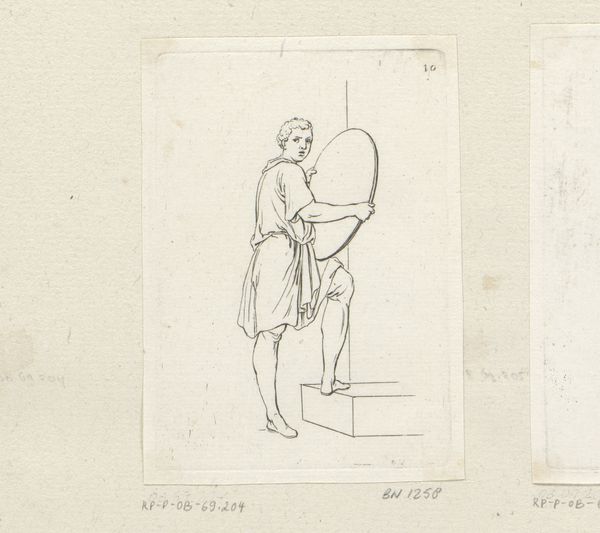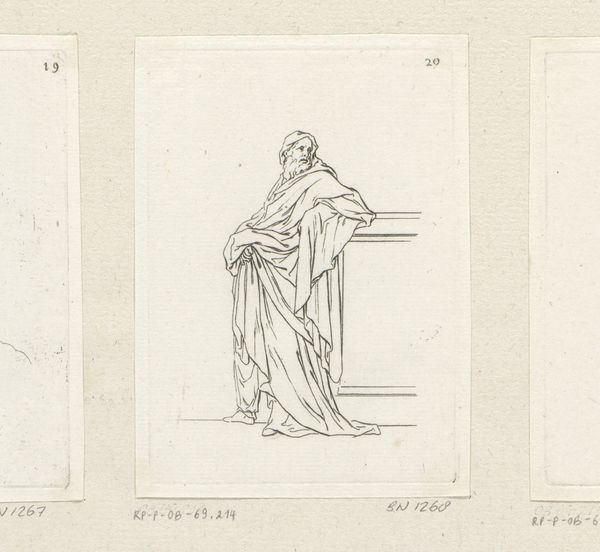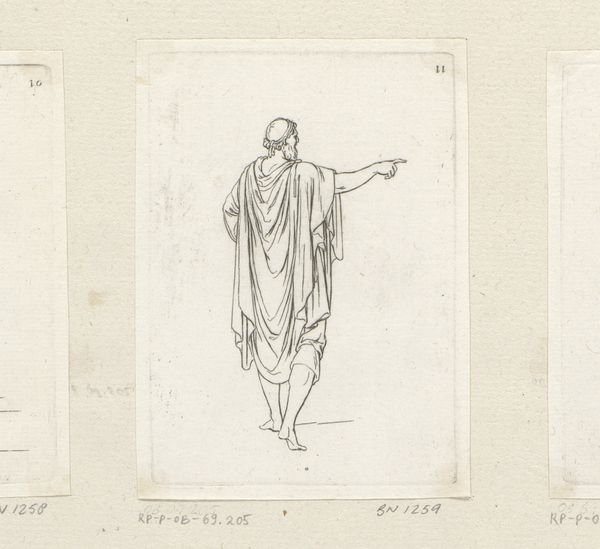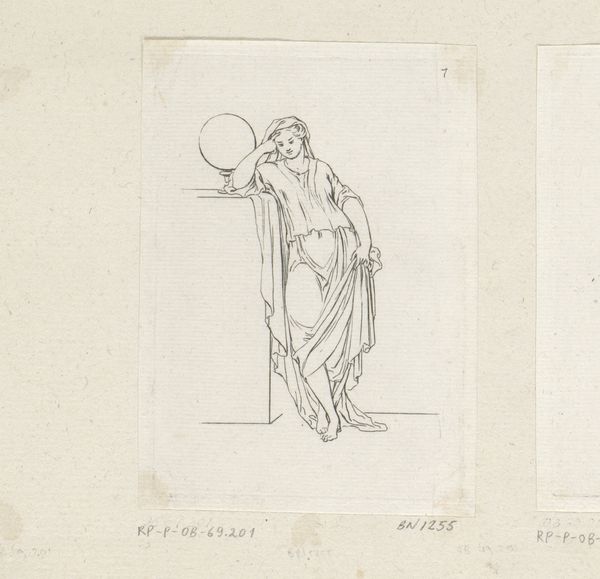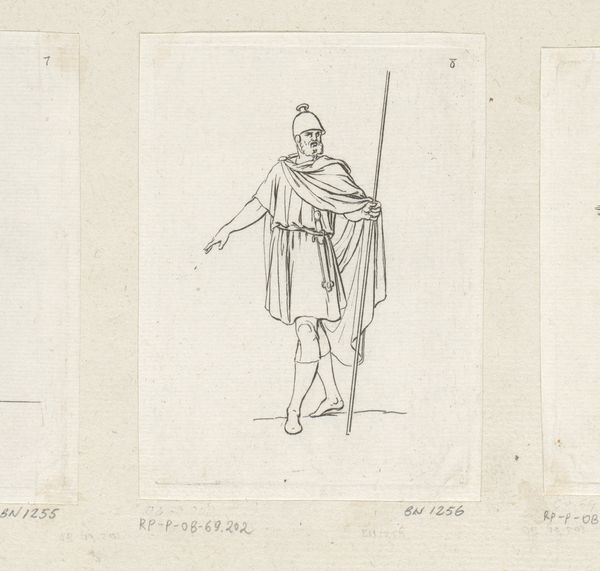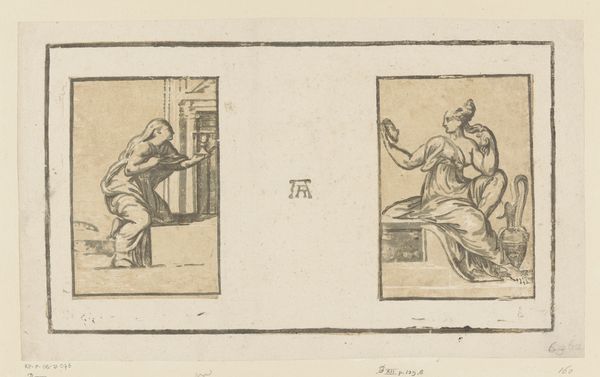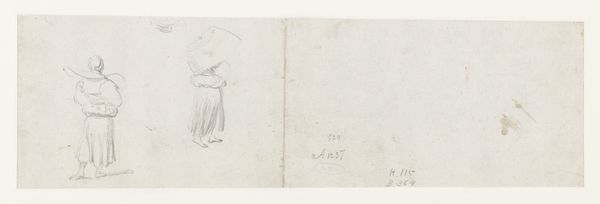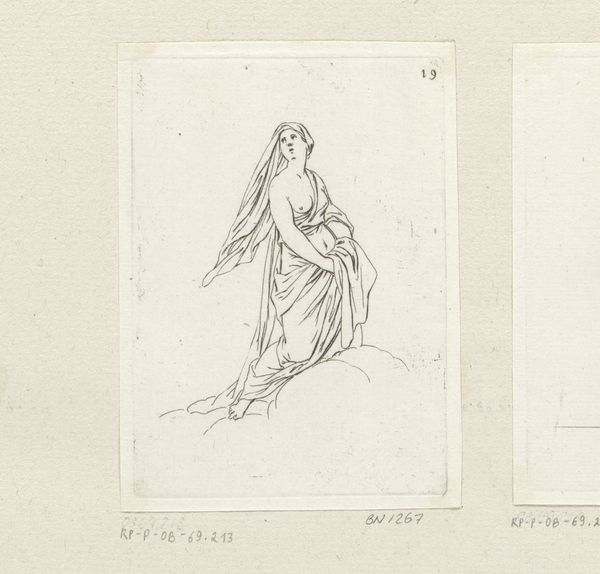
Dimensions: height 106 mm, width 74 mm
Copyright: Rijks Museum: Open Domain
This drawing of Pythagoras was made by Sébastien Leclerc I, in the 17th century. The image shows the Greek philosopher stood, knee bent, pointing to a geometric diagram on a tablet. Leclerc was an engraver, mathematician and military engineer working in France during the reign of Louis XIV. He was admitted to the Académie Royale de Peinture et de Sculpture in 1672, and later became a professor of geometry at the Académie. The diagram Pythagoras gestures towards is believed to be his theorem for calculating right-angled triangles. Although Pythagoras lived two-thousand years earlier, Leclerc’s image is characteristic of its own time, as well as its subject. In seventeenth-century France, geometry and mathematics were viewed as the cornerstones of rational thought, making this a fitting subject for an artist employed by the royal court. By understanding the social conditions in which art is made, and consulting archives such as those held here at the Rijksmuseum, we can better understand the political messages that works like this may carry.
Comments
No comments
Be the first to comment and join the conversation on the ultimate creative platform.
